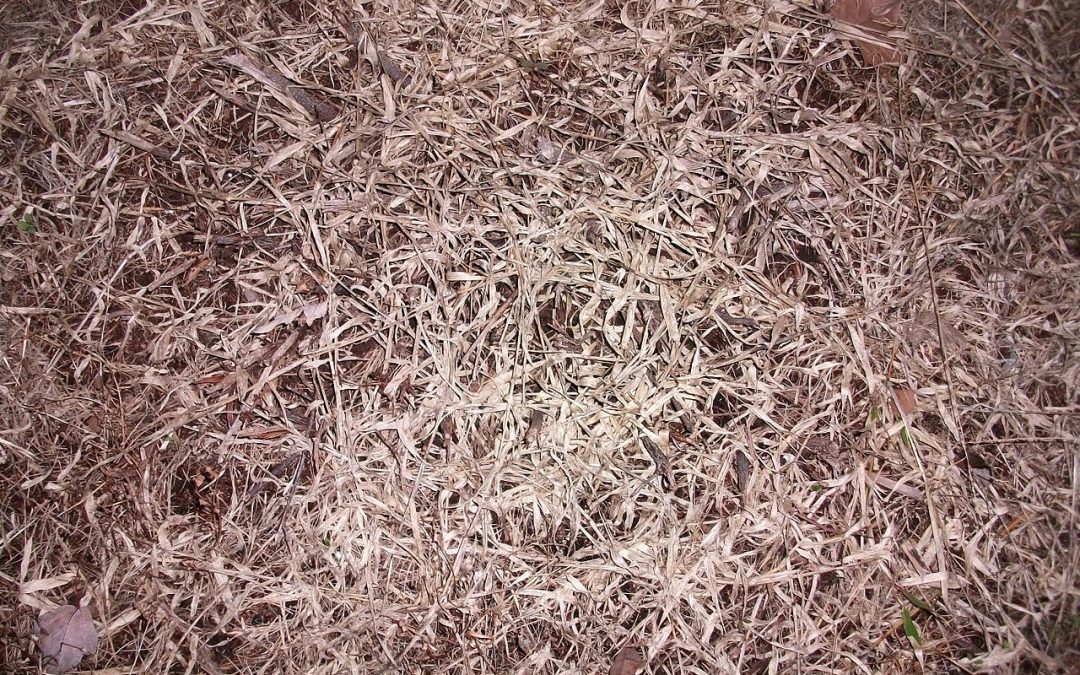Grass can go kaput any time of year. The hot, dry conditions of summer can leave grass brown and unappealing. Winter snow mold and thatch buildup can leave your grass with dead spots. But is it really dead? Or just dormant?
Before taking any action, it’s worth your time to determine if you have a dead lawn or just one that’s taking a nap. You don’t want to rip up a living lawn. Nor do you want to waste time mowing, watering, fertilizing, and trying to revive grass that isn’t coming back.
Dead grass and dormant grass look much the same. It can be tough to tell the difference, but here’s what the experts say about discerning dead from dormant.
Is the Grass Dormant, or Dead? 4 Ways to Tell
- Pull some grass out of the ground. Dead grass comes out easily, roots and all, with no resistance. When you pull on dormant grass, only the blades of grass come up.
- Look at the color pattern. If the lawn has brown spots in random places, chances are those spots are dead. A uniformly brown lawn means it’s probably dormant.
- Water it. If new blades of grass appear, you’re looking at a dormant lawn.
- Check its feel underfoot. Crunchiness can mean the grass blades have had their day but underlying roots are still healthy. Sponginess signals fungal diseases, pest infestations — and dead grass.
Death is final. But dormancy, while it can look similar, is your lawn’s natural reaction to stress. Even warm-season grasses may turn brown due to the stress of summer’s hot, dry conditions.
What You Can Do
Dead Grass
If less than half your lawn is dead or you can see surviving green shoots among the brown, crunchy blades of grass, it’s worth a try to save it. It will be less costly than re-sodding the entire lawn. Aerate the lawn. Power aerators work best. Rent one if you don’t own one. Raking the yard will help remove much of the dead grass. Be sure to take up thatch and other debris. Add new grass seed where needed and fertilize and water.
If the entire lawn is dead, there’s no way to save it. It’s time to start over by re-seeding or re-sodding the entire area.
Dormant Grass
Dormancy is a lawn’s reaction to heat and a lack of water. The plant gives all its resources to the roots, rather than the leaves. While brown grass may not look very appealing, dormancy is normal and usually lasts around four weeks. As the season’s change and weather conditions become more ideal for grass, your healthy lawn should return. Still, there are some things you can do to push it along a bit.
- Water enough to soak the soil to a depth of about 5 inches. Your lawn needs about an inch of water every week.
- Mow your grass at a high setting once it starts to come back (don’t mow while it’s dormant).
- Continue to weed, even during dormancy.
- Don’t fertilize during dormancy.
- Limit foot traffic across your lawn.
Stay away from weed killers and herbicides during dormancy. It can damage already stressed lawns, and it may turn out insects weren’t the problem after all. Kelley Klopp of the Utah State Extension office says, “It is often difficult to diagnose insect problems when the grass is dormant. Be certain you are dealing with an insect problem before using insecticides, and always read and follow label directions.”
Preventive Measures
You can change the design of your yard to help your lawn make it through a drought. Reduce the setting on your mower blades and keep the grass a bit longer. Reduce slopes, if possible, so water doesn’t run downhill and off the grass. Put a greater distance between trees and shrubs and prune regularly, keeping shade to a minimum. And add good topsoil, if necessary.
Also, consider the climate where you live and choose an appropriate turfgrass. Cool-season grasses, like Kentucky bluegrass, perennial ryegrass, and tall fescue, thrive in temperatures between 68 and 77 degrees. Building a lawn from these varieties in a hot, dry climate can send them into dormancy early. It can also cause the grass to die. They fare much better in northern parts of the country.
Warm-season grasses work well in temperatures of 80 to 95 degrees, as they’re more drought-tolerant. They include Bermuda grass, Buffalo grass, and Zoysia grass, one of the better turfgrasses for hot climates. These lawns are usually started from sod, as they are more challenging to grow from grass seed than cool-season types.
Before you ask “Why is my lawn dying?” make sure it’s not just taking a nap. With a little TLC (tender lawn care,) you’ll have a green lawn again before you know it.

